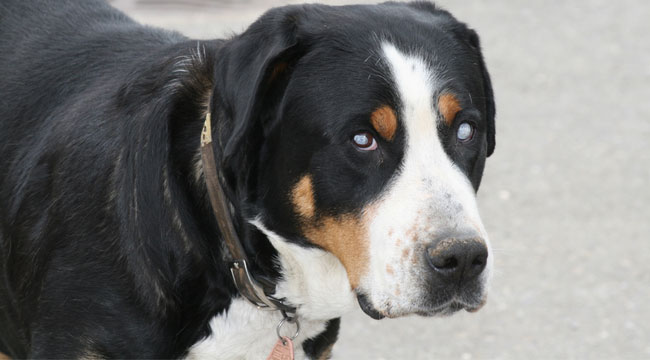
Whether your dog loses their sight or is born blind, you can enjoy living with them just like a sighted dog. A blind dog can have an excellent quality of life if given the necessary care.
In this article, you’ll find answers to your questions about your blind pet. We will talk about tips for caring for your blind pet companion.

Do Blind Dogs Suffer?
Many reasons and factors constitute a dog going blind; it may happen because of accidents, ailments, or genetics. You may be thinking it is cruel to keep your blind dog alive. The truth is your blind dog isn’t suffering. Dogs adapt very well to losing their vision. Blind dogs still get lots of fun from walks, food, games, and lounging around.
Dogs don’t brood on the past. However, they might go through unnecessary stress if no adjustment is made for them in their environment. Living with a blind dog isn’t so much different from living with a sighted one.
Related Post: Dog Eye Problems | Eight Most Common Eye Problems of Dogs In 2022
Can Blind Dogs Live Happy Lifes?
Absolutely! A bling dog can lead a good life and enjoy every bit of it. Many dogs that suddenly go blind due to old age or an ailment may feel depressed initially, though. It is like getting acquainted with a new kind of life. It is challenging and can worsen if no allowance and care are made for their new condition.
The Adjustment Period
Your blind dog can live a happy life, but there is an adjustment period for many dogs. It is easier for young dogs who have been “home-trained” to adjust to blindness, especially when it sets in gradually. In contrast, older dogs and outdoor or service dogs might take a longer time to adjust to blindness, particularly when the blindness is sudden.
For the first few weeks and sometimes up to six months, blind dogs may show changes in temperament and signs of increased fear, anxiety, and aggression.
Your Role to Play
As a dog owner, you have the most significant adjustment to make when your dog is blind. You should train, help, support, and comfort them whenever and however you can. This will ease the transition, limit anxiety, and help your dog lead a happy and comfortable life.
Despite this adjustment, dogs are resilient pets and do not live their lives lamenting about their loss; in fact, they adjust relatively quickly to being blind. Because dogs don’t rely much on their sight as on other senses, a blind dog can have a rich life full of fun, just like a sighted dog. A dog can maneuver life seamlessly with smell, hearing, touch, and love from its owner.
Care for a Blind Dog
You can do many things to make your blind dog more comfortable at home and when they go out.
We have made a comprehensive list that you can pick from using your dog’s personality and habits as the yardstick.
Keep Your House in Order
It is vital to keep your environment as consistent as possible. Remember, your dog cannot see obstacles. Your dog would have programmed itself to navigate the environment by heart. Do not move furniture around unnecessarily.
Also, keep the dog’s bed and food bowls in the same place. In the same vein, your outdoor space and yard should be consistent. Fence swimming pools, ponds, and gardens where necessary. Consistency will help with your dog’s ability to form a mental map of their surroundings.
Predict Hazards
Be on the lookout for sharp edges, wet ground, and things your dog could slam into or fall from. Take precautionary steps to avoid these hazards. Cover sharp edges, keep the floors clean, block ledges, and even the stairs.
Be Careful on the Stairs
If your dog is used to stairs, all you need do is reinforce their knowledge gradually, as they are now navigating without sight. Support your dog as it moves slowly up or down the stairs.
Stairs can be tricky and, in some instances, might have to be relearned. Use traction strips or carpets to keep your dog safe. You should reward your dog with treats to help their mind.
Crate
A blind dog cannot avoid danger so well. It will help if you put your dog in a crate when there is much work around the house. This will save the dog from injuries and accidents they cannot avoid.
Use Sound as a Guide
Your dog may get startled when touched; your alternative form of the guide is using sound. You can guide your dog through the house by tapping on the floor and walls. You could snap your fingers to direct the dog towards you.
If your dog finds it comforting when you are around, make your presence known by talking to your dog. You can wear a scent, a bell, or walk heavier steps through, reassuring them of your presence.
Make them feel comfortable by leaving the TV or radio on when you aren’t around them. You may want to buy toys that make some noise; it is very appealing to blind dogs.
Train
Teach your dog a few new commands to communicate danger or a movement. Use words like “stay,” “step up,” “step down,” and “slow” consistently to show them the stairs and how to move. Words like “food” or “drink” for bowls and “stop” for danger. Your dog will only know some of these on the first try. Allow your dog to make mistakes but be near to support and help them.
Conclusion
Your dogs can be happy even with their blindness. It is in your hands to appropriately care for them and make the transition easy. Understand your dog’s needs and meet them carefully.




